ON THE RECORD: COMPLETE TEST OF THE 2001 YAMAHA YZ250
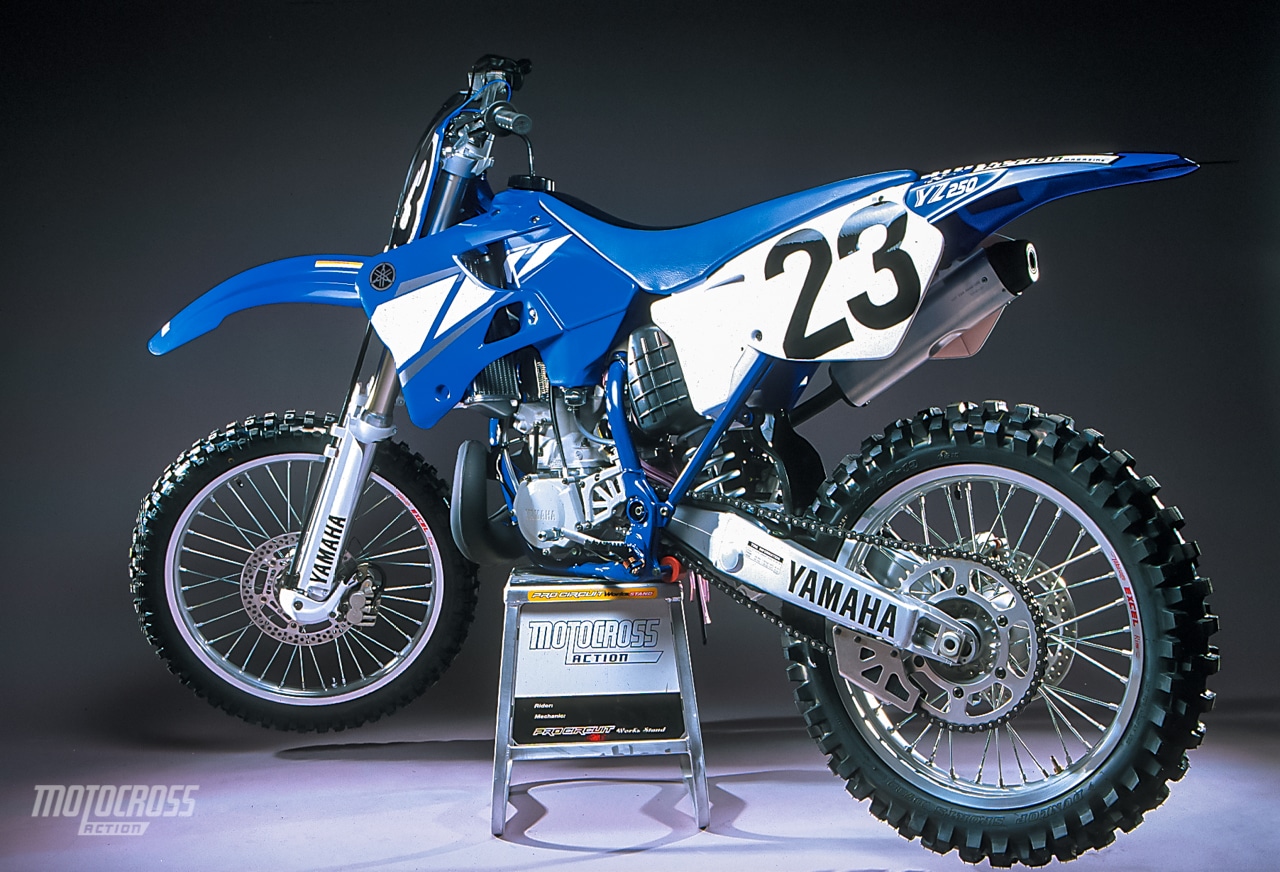 This test of the 2001 Yamaha YZ250 is from the December 2000 issue of MXA.
This test of the 2001 Yamaha YZ250 is from the December 2000 issue of MXA.
Q: IS THE 2001 YAMAHA YZ250 ENGINE FAST?
A: Not only is it fast, but it’s smooth. Not only is it smooth, but it’s broad. Not only is it broad, but it’s crisp. Not only is it crisp, but it’s flexible. Not only is it all those things, but it’s more. Yamaha is the first motorcycle manufacturer to figure out that it’s not how much power you make, but how you make it. And, more importantly, not how big your peak number is, but how much breadth the powerband has. Oh, by the way, the 2001 Yamaha YZ250 makes 44.5 horsepower–that puts most of the competition to shame. You don’t have to go for broke to ride the 2001 YZ250. It has rheostat-style power. Dial in whatever throttle setting floats your boat and sail off into the distance.
Q: IS THE ‘01 ENGINE BETTER THAN THE ‘00?
A: It sure is! But don’t be fooled into thinking that it is eye-watering, white-knuckle, cloud-of-dust faster–it’s not. It’s just crisper in the middle and better on top. It does not obsolete last year’s YZ250 engine, but it does build on it.
Q: IS THERE A DOWNSIDE TO THE YZ POWERBAND?
A: No. The YZ250 doesn’t have a weak spot. There is no circumstance on a track that the YZ250 doesn’t have a handle on. It can be raced by Novice and Pro alike. It can be revved and can be torqued. It can do hairpins at a quarter throttle or long straights at full-tilt boogie.
Q: HOW GOOD IS THE YZ250 ENGINE?
A: Great! Ponder these facts. The Suzuki RM250 is a light flywheel burst engine. It produces a volley of power that is ephemeral, quick and unfulfilling. The Honda is a decent mid-and-up engine that is finally blessed with the over-rev it has been lacking for years. However, the CR is poorly jetted and devoid of low-end. Kawasaki has always had the most powerful 250 engines, but they have never been broad, easy to use or blessed with over-rev. To be successful on a KX250, you have to have the throttle pegged (there are no half-throttle solutions). KTM made major improvements for 2001. They turned the sow’s-ear 2000 KTM 250SX engine into a silk purse with a tractor-like 2001 powerband. But, ounce for ounce, the YZ250 is the best all-around engine in the 250 class.
Q: WHAT ABOUT THE JETTING?
A: We ran the stock jetting without major complaint. Riders in colder climates might go richer, but they won’t need to go leaner. Be sure and adjust the air screw for your local conditions. In the end, these are the settings we ran.
Mainjet: 175
Pilot jet: 50
Power Jet: 55
Needle: N3CW
Slide: 7.0
Air screw: 1 1/2 (1 turn stock)
Clip: 3rd
Notes: If you hop the YZ250 engine up, add a pipe or raise the compression, it will ping. You can try going bigger on the mainjet or adding a 50/50 mix of race gas with your pump gas.
Q: HOW GOOD IS THE GEARING?
A: We ran it stock, but if you want more oomph, gear it down one tooth that is what th Team Yamaha riders do.
Q: WHAT ABOUT THE REAR SUSPENSION?
A: Yamaha is old-school and bless them for it. While every other manufacturer is busying changing its rising rates and playing rear shock roulette with each new model, Yamaha hasn’t changed their linkage, rising rate or swingarm length for years. As a result, they have been able to concentrate on dialing in the shock. Since there are no unknown quantities in the YZ system, the YZ250 rear suspension just keeps getting better. After you roll the bike out of the showroom, click the clickers a few times (so you feel like your doing something) and then race it. Don’t sweat the details—this suspension works.
QUESTION EIGHT: WHAT WAS OUR BEST SHOCK SETTING?
A: What was our best setting?
Spring rate: 4.8 kg/mm
Race sag: 101mm
Hi-compression: 1 1/4 turns (1 stock)
Lo-compression: 8 clicks
Rebound: 11 clicks
Notes: Yamaha’s high-speed compression clicker (the large dial) is very sensitive to adjustment. Make small (1/8th turn) changes. Use the high-speed adjuster to set the bike’s fore/aft bias at speed. Faster and heavier riders will need to move up to a 5.0 kg/mm spring (many riders like the feel of a 5.2 for jump tracks).
Q: HOW GOOD ARE THE KAYABA BUMPER FORKS?
A: Do you know the difference between a Kayaba Bumper fork and a Kayaba Bladder fork? Thought not. Don’t lose any sleep memorizing the part numbers. Just remember this, Yamaha uses bumper forks and Kawasaki (and the CR125) uses bladder forks. The bladder fork is the newest technology, but Yamaha has more faith in the tried-and-true bumper system. What do we think? We think Kayaba has it in spades over Showa regardless of which damping system they employ (proven by the fact that the Kayaba-equipped CR125 is night-and-day better than the Showa-equipped CR250). So how good are the YZ250 forks? Very good.
Q: WHAT ARE THE BEST FORK SETTINGS?
A: What was our best setting? For hard-core racing we recommend this set-up:
Spring rate: 0.43 kg/mm
Oil height: 135mm
Compression: 11 clicks out
Rebound: 11 clicks out
Fork leg height: Level
Notes: The biggest rap against previous YZ forks has been bottoming (and the irritating clank they made when the springs hit the cartridge rod). Have no fear, Yamaha increased the compression damping, stiffened up the bump rubber and put a nylon spacer on the top of the spring (for noise control). It’s all good.
Q: HOW DOES IT HANDLE?
A: There isn’t a single aspect of the YZ250 handling package that is worthy of complaint. Other bikes have quirks, glitches or eccentricities–not the YZ250. No one ever complains about a YZ250 shaking its head, twitching in the whoops, pushing in the corners, careening down fast straights or hopping in the braking bumps. Don’t get us wrong, the handling isn’t perfect. It could be improved. It could turn sharper. It could track a finer line. It could be looser in the air. But, all-in-all, the YZ250 chassis stays closer to the sweet spot than the competition.
Q: WHAT DID WE HATE?
A: The hate list:
(1) Front brake lever: Yes, Yamaha did listen to our constant complaints about last year’s over-engineered front brake levers. However, their fix was to go to the second most over-engineered front brake lever (it’s a KX copy). What’s wrong with a no-fuss, no-muss, old-school brake lever?
(2) Hand holds: A few years ago, you could pick a Yamaha up by its hand holds. Then some stylist claimed that they ruined the lines of the side panels. Could Yamaha please send that artist out to the races to put the bike on the stand for us.
(3) Brake hose: The MXA wrecking crew could tell Yamaha three different ways to bust Honda’s patent on routing the brake hose directly to the caliper. Please call us.
(4) Graphics: The decals have the lifespan of Gypsy moths.
(5) Warning labels: The only way to get a Yamaha warning label off is with a heat gun (from underneath the fender).
(6) Triple clamps: We prefer adjustable bar mounts.
(7) Radiator wing: This is getting old. If Yamaha would move the rear radiator shroud bolts back two inches, the rear corner wouldn’t curl up.
Q: WHAT DID WE LIKE?
A: The like list:
(1) On-the-fly clutch adjuster: Turn it forward and the clutch gets tighter, and vice versa. It’s handy.
(2) Clutch lever: When Yamaha went to the on-the-fly clutch lever, they stopped in-the-know riders from switching to the old-school XT lever. For 2001, Yamaha made amends by reshaping the stocker in the image of the enduro lever. It’s an improvement.
(3) Brakes: The front brake rotor is floating and has a 5mm larger diameter than last year. The biggest plus is that Yamaha went back to a Nissin master cylinder after several years of using Akebono copies. Good brakes.
(4) Water pump: Proving that Eyvind Boyesen was right all along, Yamaha increased the diameter of the water pump outlet to flow more water.
(5) Shifting: Lots of machining lightened the shift cams to make it easier to grab the next gear.
Q: WHAT DO WE REALLY THINK?
A: Buy this bike. Ride this bike. Love this bike. We do! Yamaha is going to sell every YZ250 they make…probably before you have time to get down to your friendly local dealer. Run, don’t walk.


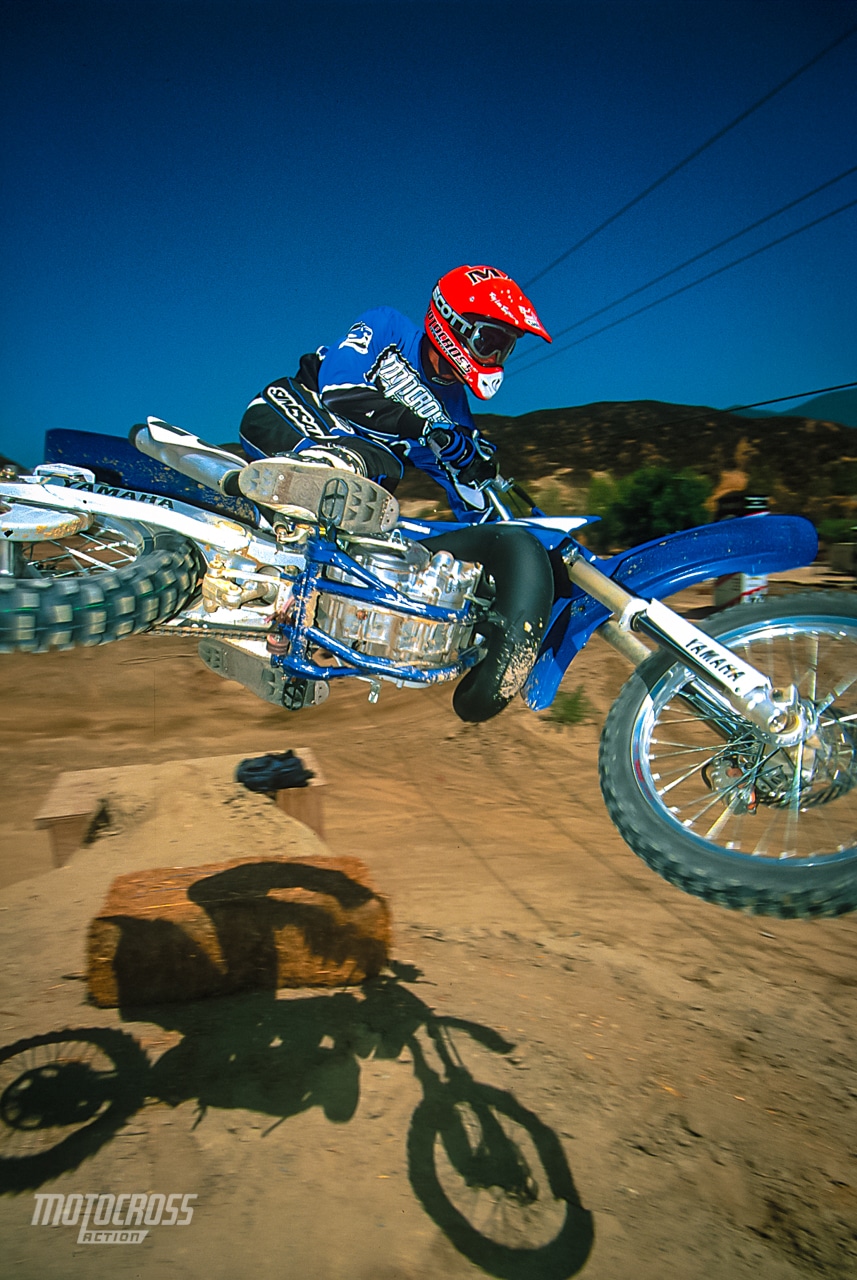
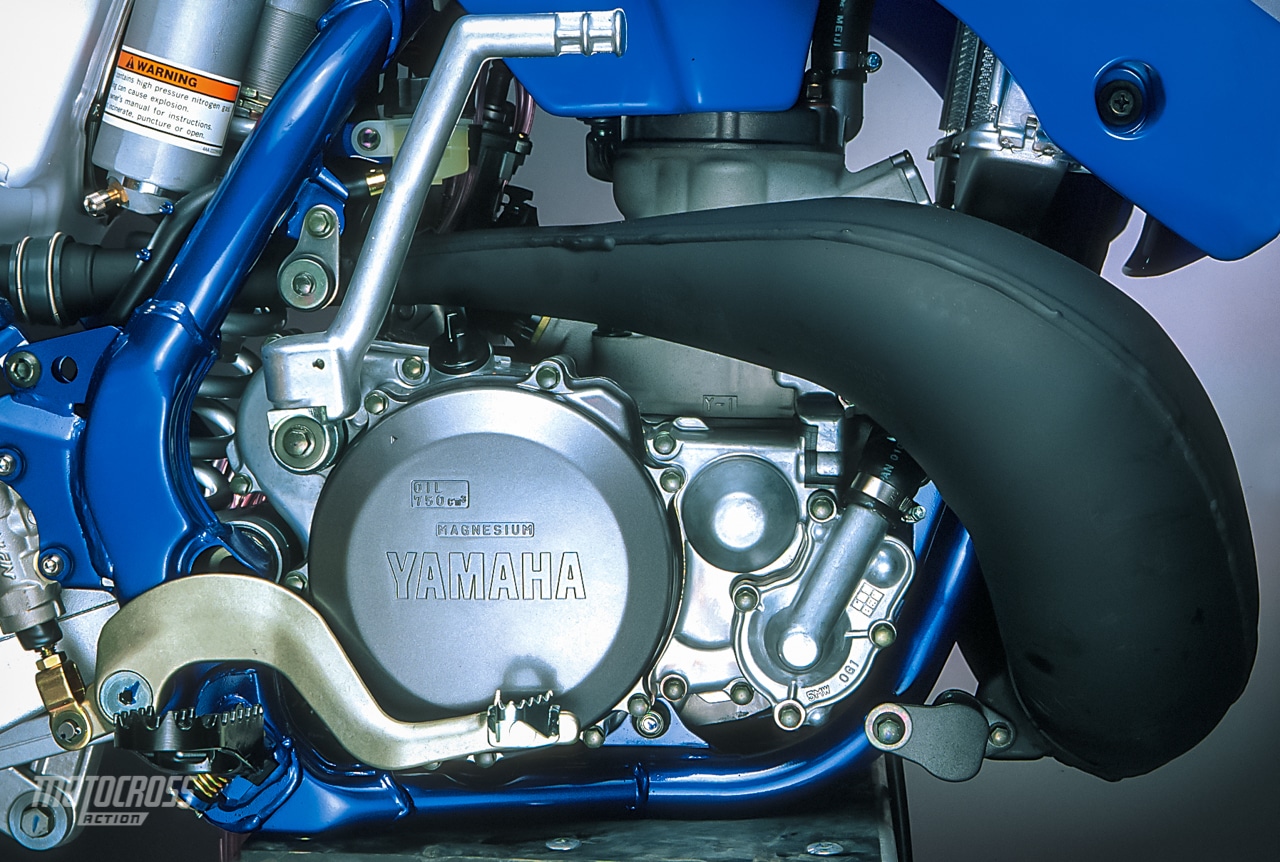
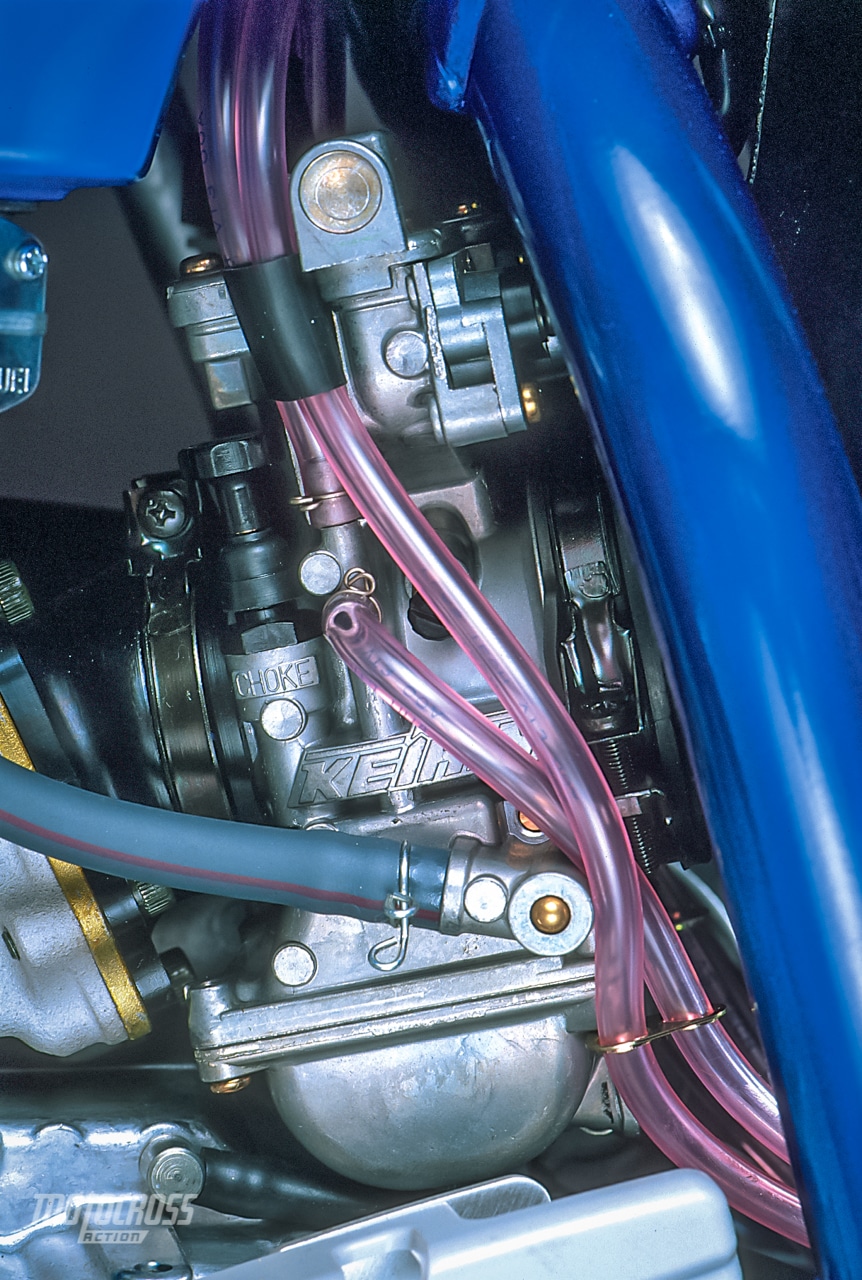

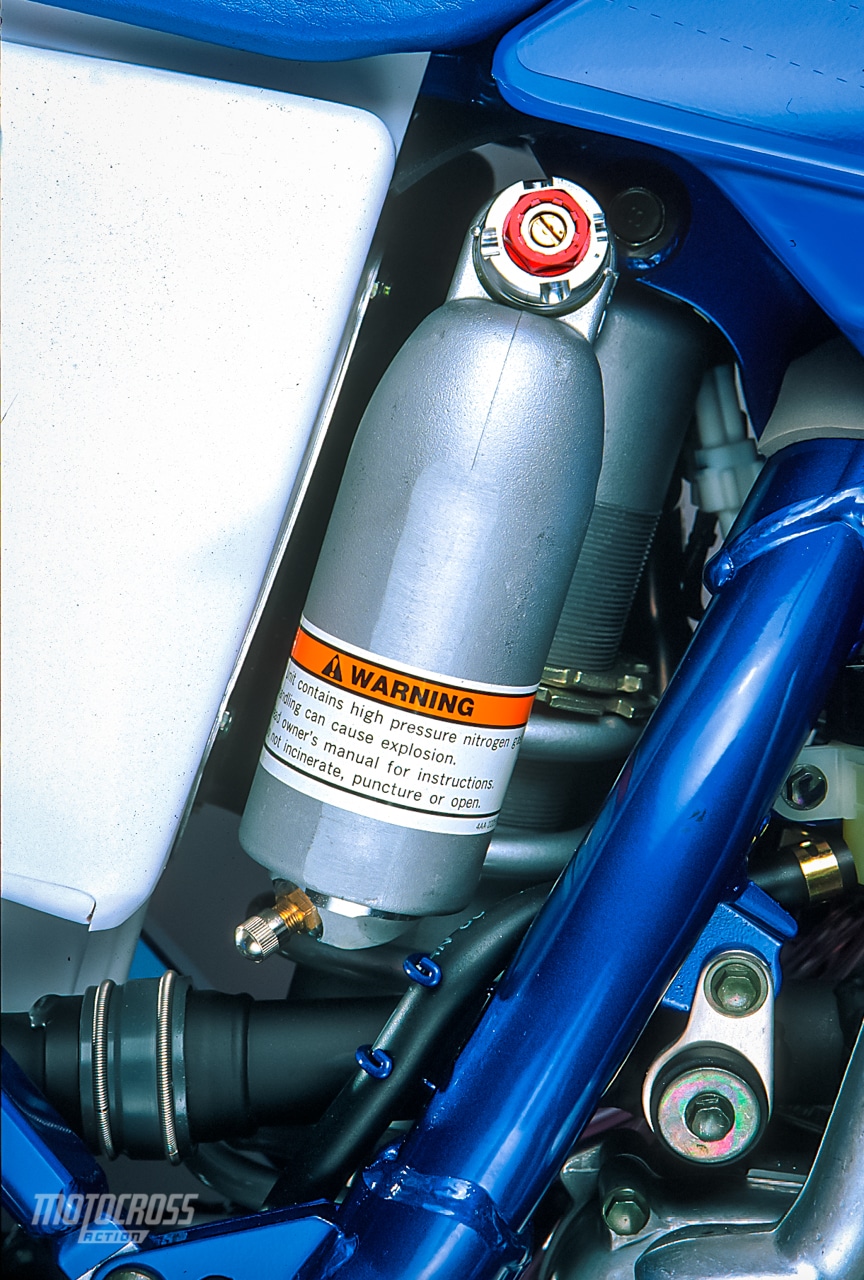
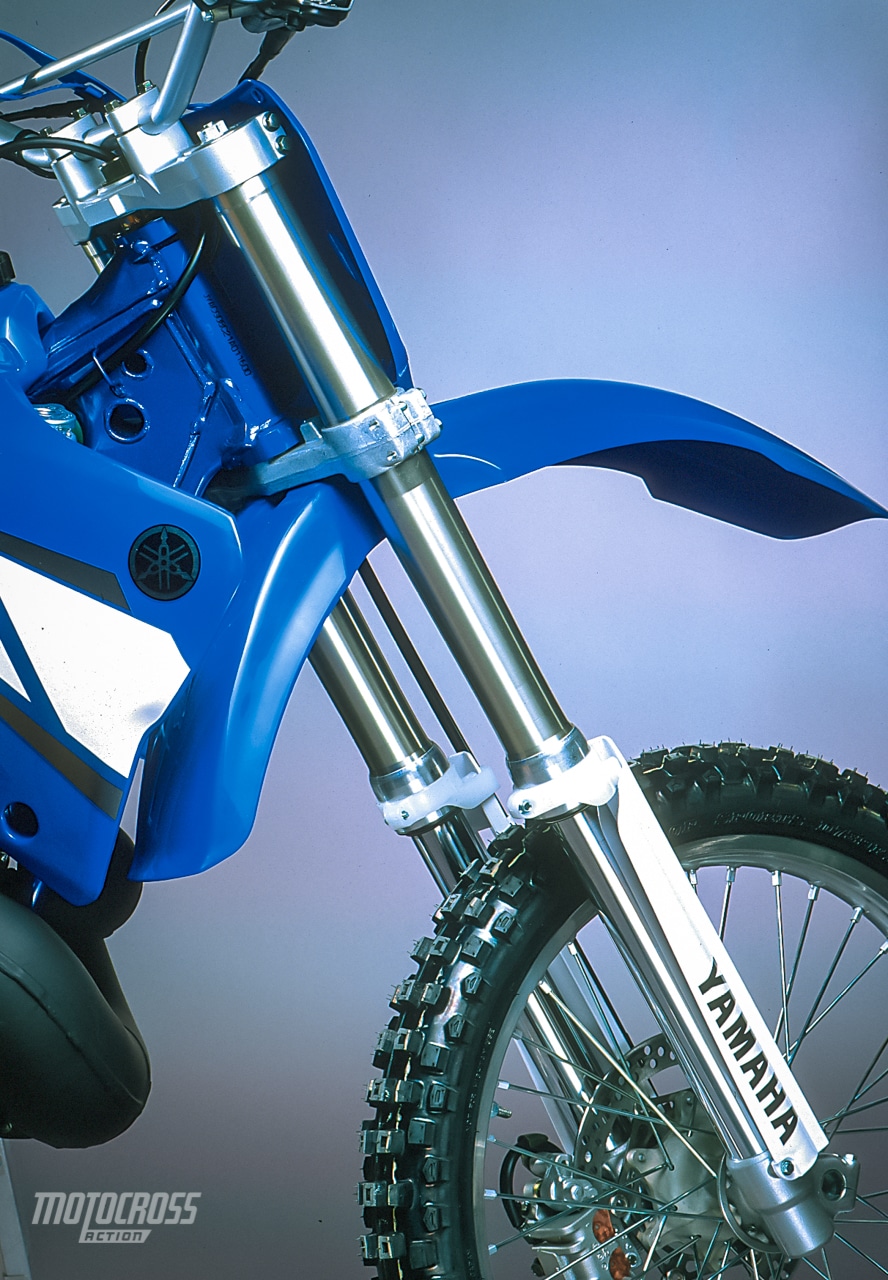
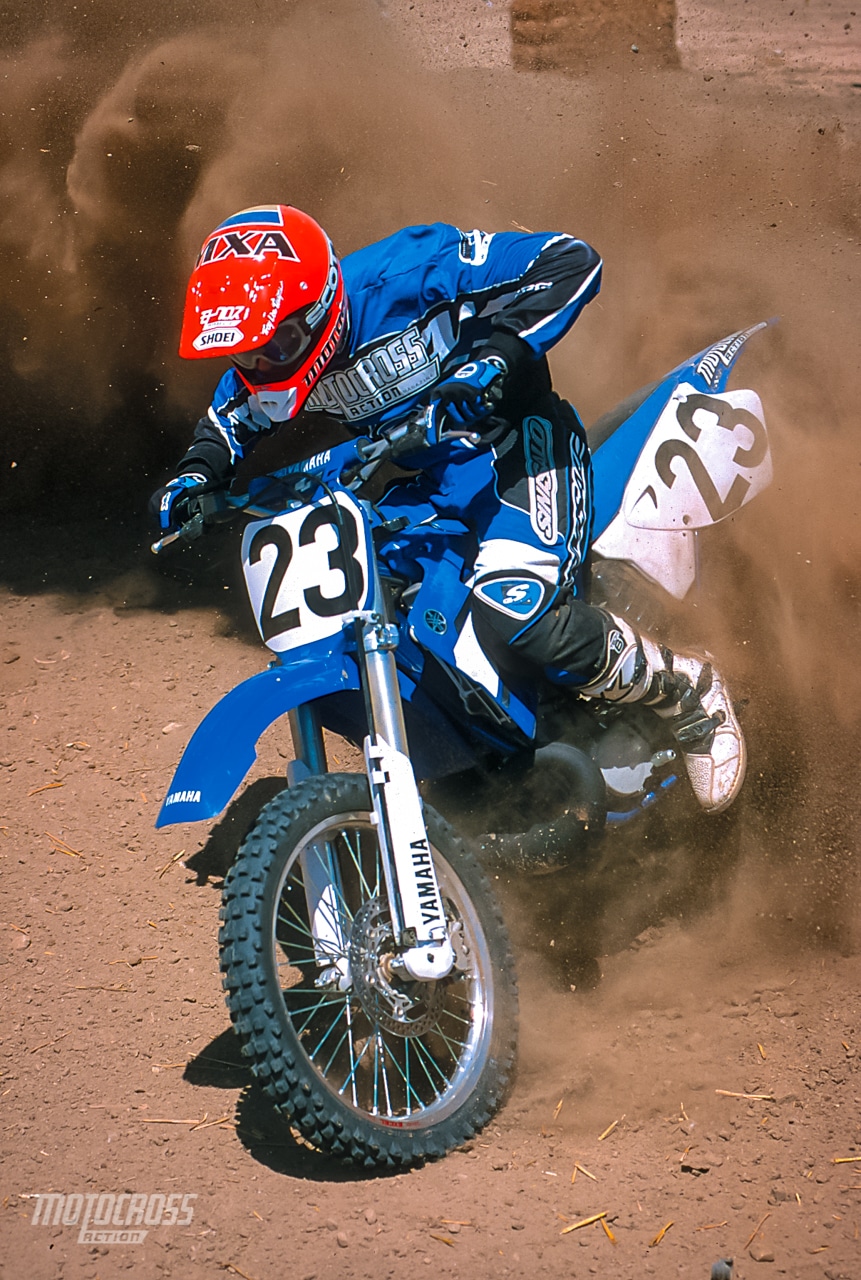
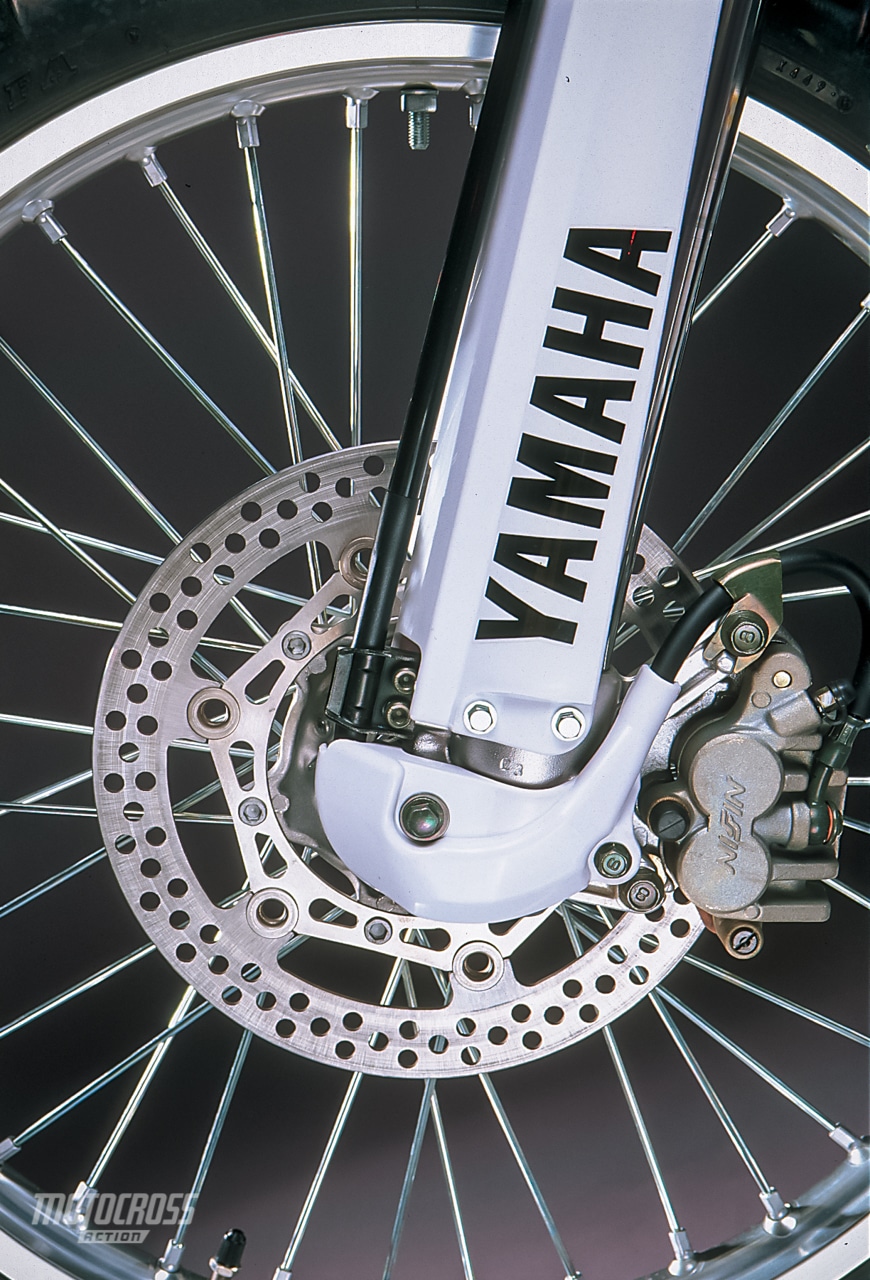
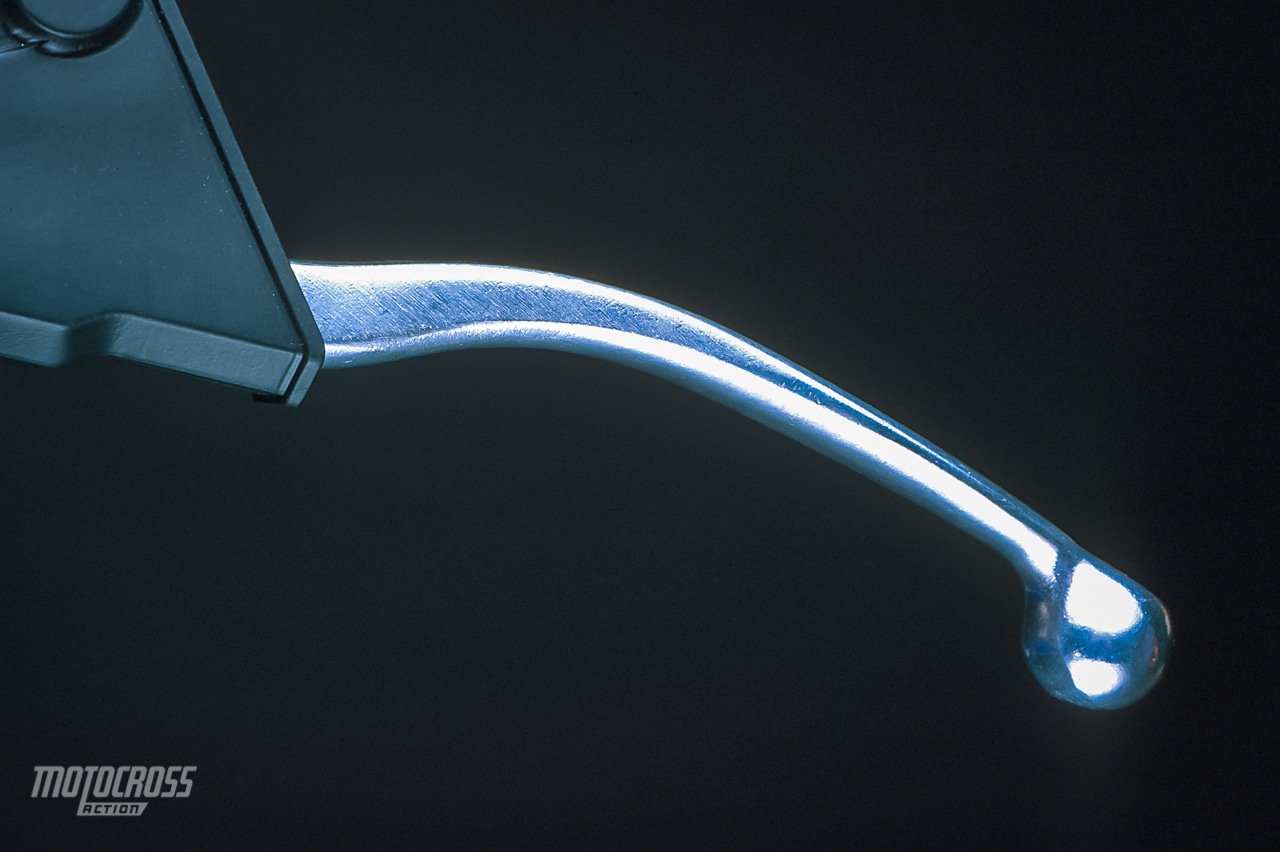
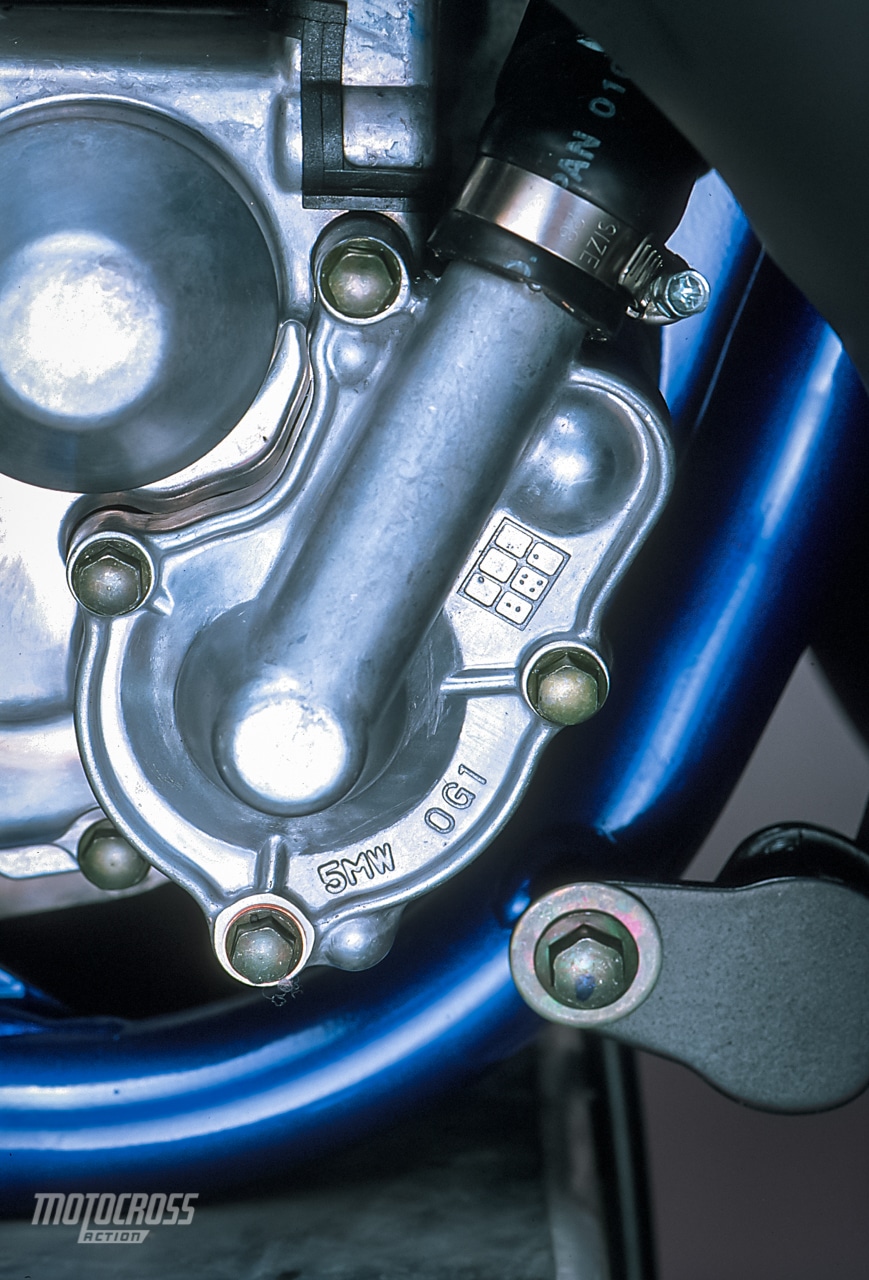



Comments are closed.